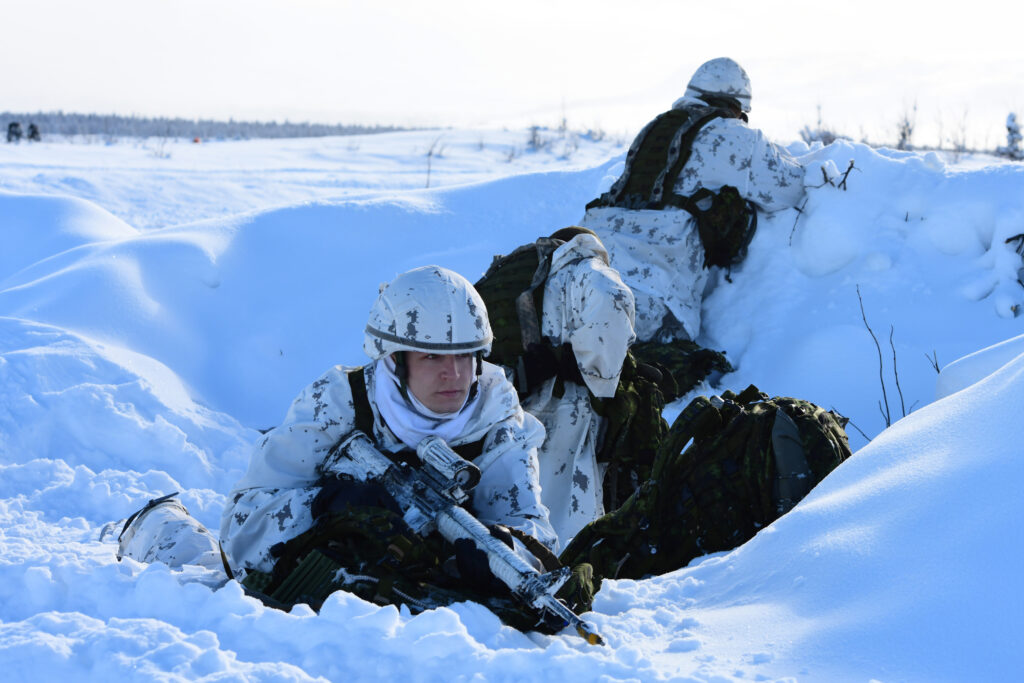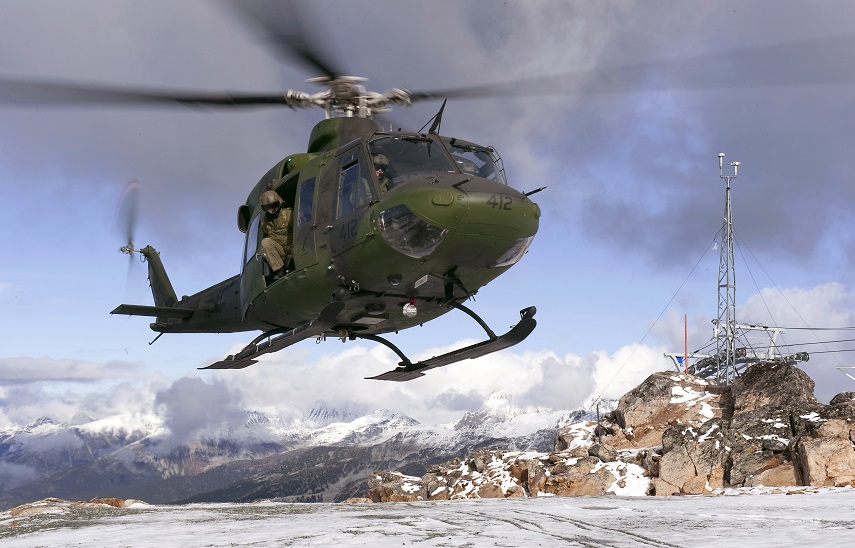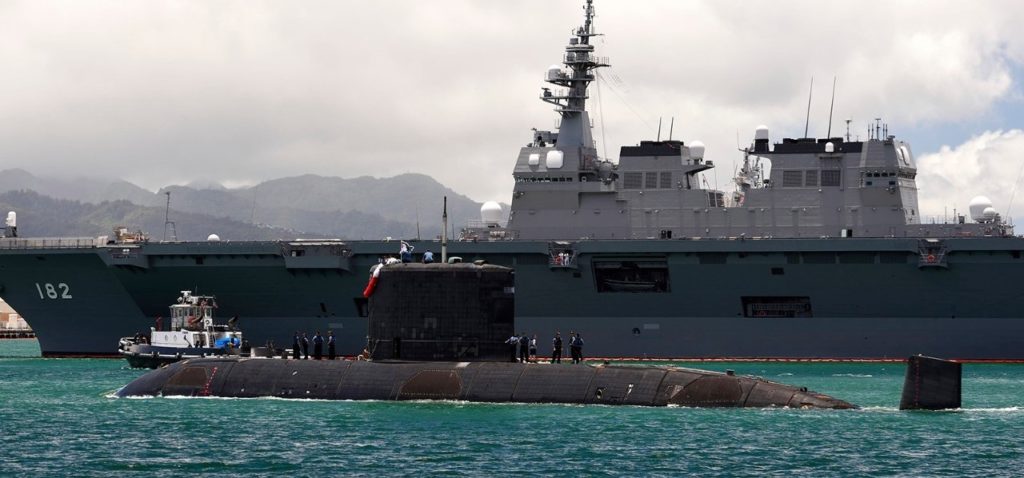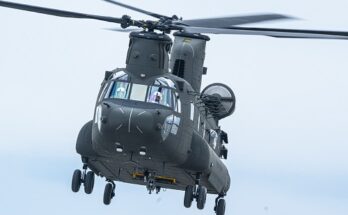
Canada issued a new defense policy that calls for an increase in defense spending for new equipment and to bolster the military’s presence in the Arctic and abroad. However, the policy fails to answer questions about several lingering military equipment requirements, such as the future of the Navy’s submarine fleet and the need for a new air defense system.
The new policy stresses the importance of Arctic sovereignty, which has been a long-running priority for the government. The policy also lays out the importance of aiding Canadians impacted by natural disasters, strengthening collective NATO defense, aiding Ukraine, and building a stronger presence in the Indo-Pacific region.
The new defense policy, dubbed Our North, Strong and Free, promises to increase military expenditures by CAD8 billion ($6 billion) over the next five years. Compared to previous spending projections, the defense budget would increase by CAD73 billion ($54 billion) over the next 20 years, or an average of CAD3.65 billion ($2.7 billion) per year.
The investment would increase Canada’s ratio of defense spending-to-GDP from 1.38 percent in 2023 to 1.76 percent by 2029-30 (Canada’s fiscal year runs April 1 to March 31), which the government says is “a major step toward reaching the NATO commitment of 2 percent.” However, no date has been set for reaching the 2 percent benchmark. Canada has the seventh largest defense budget in NATO, but it currently has one of the lowest defense-to-GDP ratios in the alliance, only outpacing Slovenia, Turkey, Spain, Belgium, and Luxembourg, according to NATO estimates.
The defense policy commits to several new programs to facilitate military operations in the Arctic and norther regions of the country including northern operational support hubs, a fleet of airborne early warning and control aircraft, maritime sensors, a satellite ground station in the High Arctic, increased foreign intelligence capabilities, and new tactical helicopters.
The helicopter program is the largest single investment, valued at CAD18.4 billion ($13.6 billion) over 20 years. Canada currently operate a fleet of around 78 CH-146 Griffon (Bell 412) helicopters, which are expected to fly into the mid-2030s. The new fleet could comprise a mix of crewed and uncrewed aircraft, according to the defense policy.

While Canada participates in the NATO AWACS program, it doesn’t have an airborne early warning aircraft of its own. The defense policy outlined a budget of CAD307 million ($226) million) over 20 years for a new airborne early warning fleet, which raises questions. That budget is too small to buy a fleet of new aircraft, so it’s unclear at this time how that money will be used, or if the program’s budget will be adjusted in the future. Only CAD23 million ($17 million) will be spent on the program over the next five years, according to the new policy document.
Another CAD1.4 billion ($1 billion) will be allocated for maritime sensors to provide surveillance along the coast and underwater. The new sensors will be deployed by the Harry DeWolf class Arctic and Offshore Patrol Vessels (AOPS) currently under construction. The policy also calls for an additional CAD9.9 billion ($7.3 billion) for naval vessel sustainment over the next 20 years, including a life extension for the Halifax class frigates.
The Army is slated to receive a new long-range missile under a program worth CAD2.7 billion ($2 billion) over 20 years. Acting on lessons learned from the war in Ukraine, Ottawa also plans to increase domestic production of artillery and build a strategic ammunition reserve. This effort will cost CAD1.8 billion ($1.3 billion) over the next five years and a total of CAD9.5 billion ($7 billion) over 20 years. Another CAD5.5 billion ($4 billion) will be used for satellite communications capabilities, which will likely come in the form of accessing satellite networks operated by the U.S. and other allies. A new cyber command will also be established at a cost of CAD2.8 billion ($2 billion).
Questions Remain
Unfortunately, the new defense policy fails to answer questions about some of the military’s most critical requirements. Perhaps the largest, in terms of its potential impact on long-term defense spending, is the future of the Navy’s submarine fleet. Canada operates four Victoria class submarines that have struggled with maintenance problems and accidents throughout their time in service. The Royal Canadian Navy says it wants a new fleet of 12 submarines, which could cost at least CAD60 billion ($44 billion). The defense policy states the government will explore options for renewing and expanding the submarine fleet, but a decision on how to proceed hasn’t been made. However, the defense policy did say that any future submarine fleet will be capable of operating under the ice, unlike the current fleet. New subs will also be conventionally powered, according to the defense policy. If the government signs off on a larger submarine fleet, then defense outlays would have to increase well beyond the levels outlined in the new defense policy.

The status of Canada’s future’s air defense capabilities also remains in question. Canada has lacked an air defense capability since the Army retired its Air Defense Anti-Tank System (ADATS) in 2012. The defense policy says the government will explore options for a ground-based air defense system (including hypersonic defense), but there are no formal plans in place to acquire a new system. Ottawa has at least taken steps to procure a man-portable short-range air defense system, awarding a $168 million contract to Saab in February for its RBS 70 NG. That weapon will be sent to Canadian troops deployed in Latvia, but information about a future ground-based air defense capability will have to wait.
The defense policy revealed several other areas where the government will explore options for new equipment. The timeline and scope of these programs is uncertain, and they aren’t factored into the additional spending announced in the new defense policy. Nor are they all guaranteed to move forward. These exploration initiatives include:
- Acquire new long-range missiles for the Air Force and Navy
- Modernize artillery capabilities (Canada has donated several M777 howitzers to Ukraine)
- Upgrade or replace Leopard tanks and light armored vehicles
- Acquire a suite of surveillance and strike drones (Canada is already procuring a fleet of MQ-9Bs)
- Acquire a counter unmanned aerial system capability (Canada has already taken steps to field several new C-UAS platforms to its troops stationed in Latvia)
- Acquire new all-terrain vehicles capable of operating in Arctic conditions
- Enable the AOPS to embark and operate CH-148 maritime helicopters
These speculative acquisition efforts would follow several major programs that are now underway, including procurement of 15 BAE Systems Type 26 frigates, 88 Lockheed Martin F-35 fighters, up to 16 Boeing P-8A maritime patrol aircraft, nine Airbus CC-330 strategic tanker transport aircraft (A330 MRTT), 11 General Atomics MQ-9B unmanned aircraft, and additional investment in modernizing North America Aerospace Defense Command (NORAD) capabilities.
The spending and acquisition plans outlined in the new defense policy will require long-term commitment from future governments, which is never guaranteed. Additional rounds of defense spending hikes would also be necessary to pay for the tentative acquisition programs discussed in the defense policy, like an expanded submarine fleet or a more advanced air and missile defense capability.
Shaun's deep-rooted interest in military equipment continues in his role as a senior defense analyst with a focus on the United States. He played an integral role in the development of Forecast International's U.S. Defense Budget Forecast, an interactive online product that tracks Pentagon acquisition programs throughout the congressional budget process. As editor of International Military Markets – North America, Shaun has cultivated a deep understanding of the vast defense markets in the United States and Canada. He is a regular contributor to Forecast International's Defense & Security Monitor blog and has co-authored white papers on global defense spending and various military programs.



